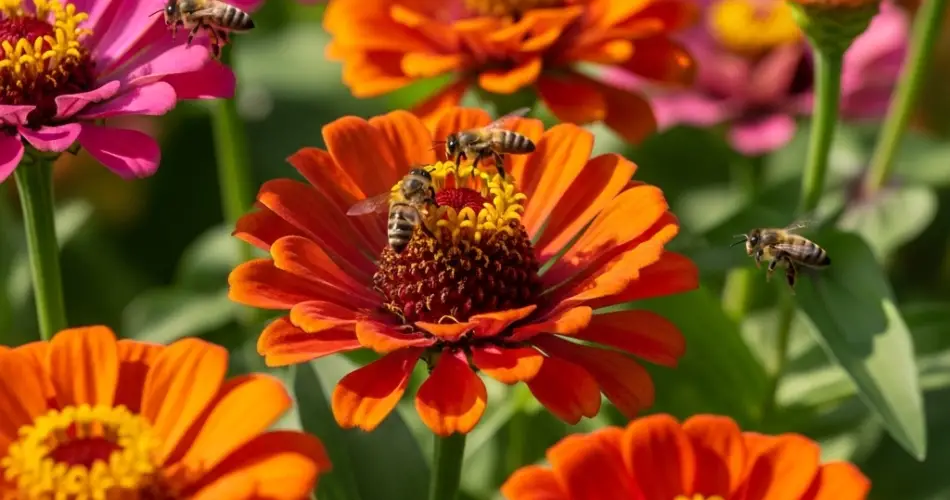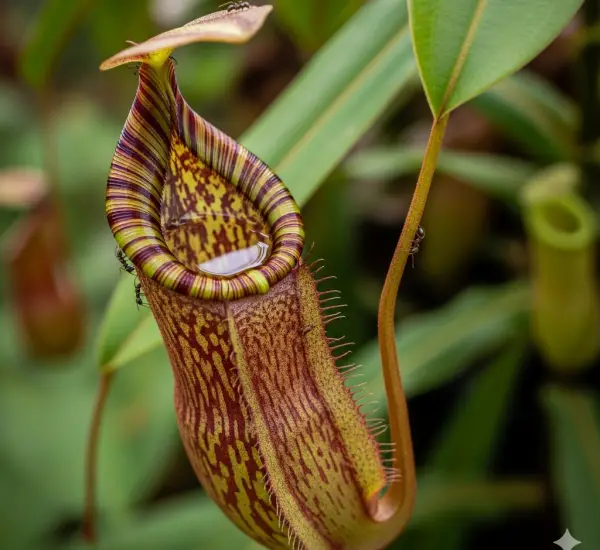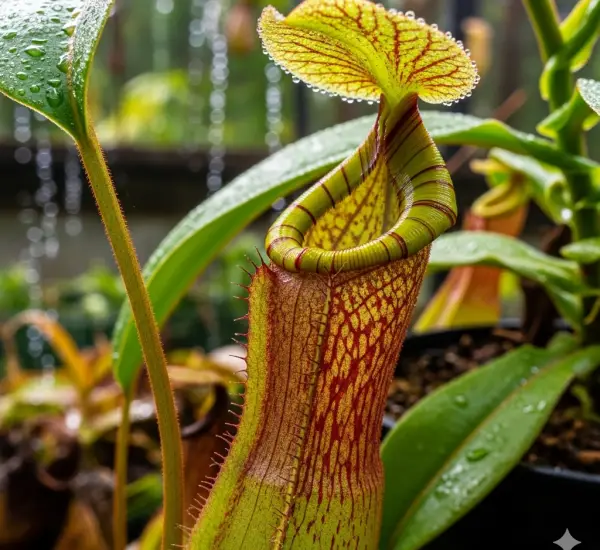Zinnias are among the most cheerful and vibrant flowers you can grow in the garden. With their bold colors, easy-growing nature, and long-lasting blooms, zinnias are a favorite for gardeners of all experience levels. Beyond their beauty, zinnias play a vital ecological role: they attract pollinators like bees, butterflies, and even hummingbirds. If your goal is to create a pollinator-friendly garden, choosing the right zinnia varieties can make a big difference.
In this guide, we’ll explore the best zinnia types for attracting pollinators and how to grow them for maximum impact.
Why Zinnias Attract Pollinators
Zinnias are rich in nectar and pollen, making them a valuable food source for pollinators. Their open, daisy-like blooms are easy for insects to land on and access. In addition, zinnias bloom continuously throughout the growing season, offering a steady supply of nourishment for bees, butterflies, and beneficial insects like hoverflies and ladybugs.
To attract more pollinators, choose single or semi-double zinnia varieties. These forms have exposed centers, allowing pollinators to easily reach the nectar. In contrast, fully double varieties, while stunning, can sometimes be more difficult for pollinators to navigate.
Best Zinnia Varieties for Pollinators
1. Zinnia elegans ‘Benary’s Giant’
This classic variety is known for its large, vibrant flowers that grow on strong stems. While many of the blooms are double, some plants in the mix produce semi-double flowers, making them more accessible to pollinators. ‘Benary’s Giant’ comes in a rainbow of colors and is particularly popular with butterflies.
2. Zinnia ‘Lilliput’ Series
Lilliput zinnias produce compact, pom-pom-like flowers with a semi-double structure. Their manageable height (usually around 18 inches) and long blooming season make them perfect for borders or containers. These blooms are loved by bees and butterflies alike.
3. Zinnia ‘Profusion’ Series
This award-winning hybrid series is a cross between Zinnia elegans and Zinnia angustifolia. Profusion zinnias are low-growing, highly disease-resistant, and bloom nonstop from early summer to frost. The single and semi-double flowers are particularly appealing to bees and small butterflies.
4. Zinnia angustifolia (Narrowleaf Zinnia)
A low-growing species ideal for mass planting or edging, Zinnia angustifolia produces small, star-shaped flowers in colors like orange, white, and gold. The open structure of the blooms makes them highly accessible to pollinators.
5. Zinnia haageana ‘Old Mexico’
This compact variety features warm red-and-yellow bicolor blooms with a single or semi-double form. It’s especially attractive to native bees and smaller butterflies. The plants are heat- and drought-tolerant, making them great for low-maintenance pollinator gardens.
6. Zinnia ‘Cactus Flowered Mix’
With their unique quilled petals and semi-double form, cactus zinnias offer an eye-catching twist that also appeals to pollinators. Their open centers provide easy access to nectar, and their tall, branching habit makes them perfect for a wildflower-style garden.
Tips for Growing Pollinator-Friendly Zinnias
To maximize your garden’s appeal to pollinators, keep these tips in mind:
1. Start from Seed
Zinnias are easily grown from seed, and direct sowing them into the garden after the last frost ensures a long season of bloom. You can also start them indoors 4–6 weeks before transplanting.
2. Choose the Right Location
Plant zinnias in full sun for the best flower production. They need at least 6–8 hours of direct sunlight per day.
3. Use Organic Practices
Avoid synthetic pesticides and herbicides, which can harm pollinators. Instead, encourage natural pest control by planting a diversity of pollinator-friendly flowers.
4. Provide Continuous Blooms
Zinnias bloom from early summer through the first frost. To keep the flowers coming, deadhead spent blooms regularly. You can also sow seeds every few weeks for a staggered bloom cycle.
5. Create a Pollinator Habitat
Plant zinnias alongside other nectar-rich flowers like echinacea, cosmos, black-eyed Susans, and milkweed to create a pollinator-friendly haven. A mix of bloom types and heights supports a variety of pollinators.
Final Thoughts
Zinnias aren’t just a visual delight—they’re an essential component of a thriving, pollinator-friendly garden. By choosing varieties with open or semi-double flowers and planting them with care, you’ll support bees, butterflies, and other beneficial insects while enjoying months of vibrant color. Whether you grow them in a backyard bed, a balcony container, or a community garden, zinnias offer a simple and effective way to boost biodiversity and beautify your space.



